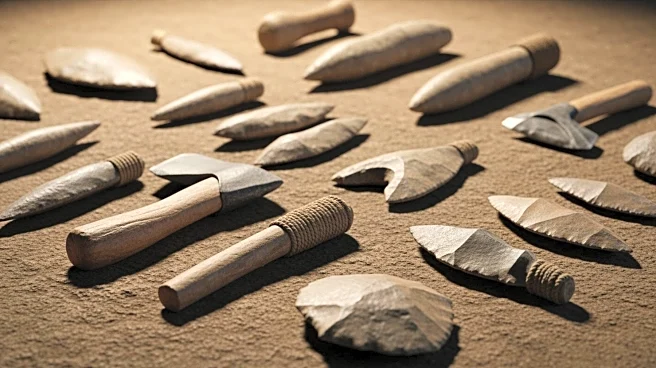What's Happening?
A team of international researchers has discovered evidence of early human toolmaking at the Namorotukunan Site in Kenya's Turkana Basin. The site, dating back between 2.75 and 2.44 million years ago, reveals that early humans maintained a consistent
tradition of crafting stone tools over nearly 300,000 years. These tools, akin to early multi-purpose 'Swiss Army knives,' demonstrate the technological prowess of hominins during a period marked by extreme environmental changes, including wildfires and droughts. The study, published in Nature Communications, highlights the cultural continuity and adaptability of early humans, as they used these tools to navigate and thrive in a changing world.
Why It's Important?
This discovery sheds light on the technological capabilities and adaptability of early human ancestors, suggesting that tool use was a generalized adaptation among primates. The ability to craft and utilize tools allowed early humans to expand their dietary options, including meat consumption, which may have provided an evolutionary advantage during periods of environmental instability. The findings underscore the resilience of early humans and their capacity to innovate and pass down knowledge across generations, contributing to our understanding of human evolution and the development of technology.
What's Next?
The research team, comprising archaeologists, geologists, and paleoanthropologists from various countries, plans to continue exploring the Turkana Basin to uncover more about early human life and technological development. Future studies may focus on further analyzing the environmental conditions and how they influenced human evolution. The collaboration with local communities and institutions, such as the National Museums of Kenya, will be crucial in advancing this research and preserving the archaeological heritage of the region.
Beyond the Headlines
The study not only highlights the technological achievements of early humans but also raises questions about the role of environmental challenges in driving innovation. The consistent toolmaking tradition suggests a deep-rooted cultural practice that may have been essential for survival. This research also emphasizes the importance of interdisciplinary collaboration in uncovering the complexities of human history and evolution.















